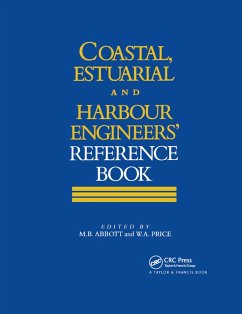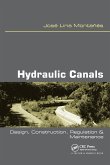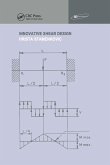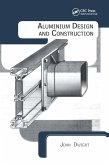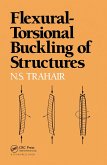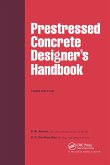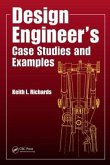Coastal, Estuarial and Harbour Engineer's Reference Book
Herausgeber: Abbott, Michael B; Price, W Alan
Coastal, Estuarial and Harbour Engineer's Reference Book
Herausgeber: Abbott, Michael B; Price, W Alan
- Broschiertes Buch
- Merkliste
- Auf die Merkliste
- Bewerten Bewerten
- Teilen
- Produkt teilen
- Produkterinnerung
- Produkterinnerung
A major new reference book bringing together wide-ranging expert guidance on coastal engineering, including harbours and estuaries. It covers both traditional engineering topics and the fast developing areas of mathematical modelling and computer simulation.
Andere Kunden interessierten sich auch für
![The Mechanical Engineer's Pocket-Book of Tables, Formulæ, Rules, and Data: A Handy Book of Reference for Daily Use in Engineering Practice The Mechanical Engineer's Pocket-Book of Tables, Formulæ, Rules, and Data: A Handy Book of Reference for Daily Use in Engineering Practice]() Daniel Kinnear ClarkThe Mechanical Engineer's Pocket-Book of Tables, Formulæ, Rules, and Data: A Handy Book of Reference for Daily Use in Engineering Practice34,99 €
Daniel Kinnear ClarkThe Mechanical Engineer's Pocket-Book of Tables, Formulæ, Rules, and Data: A Handy Book of Reference for Daily Use in Engineering Practice34,99 €![Hydraulic Canals Hydraulic Canals]() Jose Liria MontanesHydraulic Canals83,99 €
Jose Liria MontanesHydraulic Canals83,99 €![Innovative Shear Design Innovative Shear Design]() Hrista StamenkovicInnovative Shear Design89,99 €
Hrista StamenkovicInnovative Shear Design89,99 €![Aluminium Design and Construction Aluminium Design and Construction]() John DwightAluminium Design and Construction83,99 €
John DwightAluminium Design and Construction83,99 €![Flexural-Torsional Buckling of Structures Flexural-Torsional Buckling of Structures]() Nick TrahairFlexural-Torsional Buckling of Structures83,99 €
Nick TrahairFlexural-Torsional Buckling of Structures83,99 €![Prestressed Concrete Designer's Handbook Prestressed Concrete Designer's Handbook]() P W AbelesPrestressed Concrete Designer's Handbook203,99 €
P W AbelesPrestressed Concrete Designer's Handbook203,99 €![Design Engineer's Case Studies and Examples Design Engineer's Case Studies and Examples]() Keith L RichardsDesign Engineer's Case Studies and Examples97,99 €
Keith L RichardsDesign Engineer's Case Studies and Examples97,99 €-
-
-
A major new reference book bringing together wide-ranging expert guidance on coastal engineering, including harbours and estuaries. It covers both traditional engineering topics and the fast developing areas of mathematical modelling and computer simulation.
Hinweis: Dieser Artikel kann nur an eine deutsche Lieferadresse ausgeliefert werden.
Hinweis: Dieser Artikel kann nur an eine deutsche Lieferadresse ausgeliefert werden.
Produktdetails
- Produktdetails
- Verlag: CRC Press
- Seitenzahl: 752
- Erscheinungstermin: 16. Dezember 2019
- Englisch
- Abmessung: 246mm x 189mm x 38mm
- Gewicht: 1320g
- ISBN-13: 9780367864644
- ISBN-10: 0367864649
- Artikelnr.: 58439215
- Herstellerkennzeichnung
- Libri GmbH
- Europaallee 1
- 36244 Bad Hersfeld
- gpsr@libri.de
- Verlag: CRC Press
- Seitenzahl: 752
- Erscheinungstermin: 16. Dezember 2019
- Englisch
- Abmessung: 246mm x 189mm x 38mm
- Gewicht: 1320g
- ISBN-13: 9780367864644
- ISBN-10: 0367864649
- Artikelnr.: 58439215
- Herstellerkennzeichnung
- Libri GmbH
- Europaallee 1
- 36244 Bad Hersfeld
- gpsr@libri.de
Michael B Abbottand Alan W. Price
Introduction. Part 1: The dynamic environment. The deep-water origins of
the physical environment of coastal, estuarial and harbour regions. An
introduction to nearly-horizontal flows. Element of the theory of
turbulence. Diffusion, dispersion and sub-grid parametization. Elements of
non-cohesive sediment transport. Elements of cohesive sediment deposition,
consolidation and erosion. Three-dimensional hydrodynamic models.
Quasi-three-dimensional modelling using mixed finite difference and
spectral models. Two-dimensional nearly-horizontal flow models.
One-dimensional nearly-horizontal flow models. Numerical modelling of
short-period waves. Three-dimensional advection-diffusion models.
Two-dimensional advection-diffusion models. One-dimensional
transport-dispersion and water quality. Three-dimensional
sediment-transport models. Two-dimensional models of sediment transport due
to waves and currents. One-dimensional models of sediment-transport under
the influence of currents. Physical short-period-wave models.
Hydraulic-structure interaction. Part 2: The physical environment.
Groynes, offshore breakwaters and artifical islands. Beach response
modelling. Beach nourishment, offshore dredging and sand bypassing.
Marinas. Physical and mathematical models in the optimisation of breakwater
layout. Design of breakwaters and selected design wave height. Rock for
maritime structures. Wave forces on structures. Wave loads on sea dikes.
Coastal pollution and water quality. Hydromechanics of porous media in the
maritime. Geotextiles in coastal and harbour engineering. Dredging and
dredgers. Disposal of dredged material at sea. Field studies and the
analysis of data. Coastal management. Construction of maritime works.
Materials in the marine environment. Maintenance of coastal structures.
Economic appraisal of coastal engineering works. Cohesive sediments.
Hydraulic behaviour of fine sediment. Contamination in estuarine
sendiments. Cohesive sedime
the physical environment of coastal, estuarial and harbour regions. An
introduction to nearly-horizontal flows. Element of the theory of
turbulence. Diffusion, dispersion and sub-grid parametization. Elements of
non-cohesive sediment transport. Elements of cohesive sediment deposition,
consolidation and erosion. Three-dimensional hydrodynamic models.
Quasi-three-dimensional modelling using mixed finite difference and
spectral models. Two-dimensional nearly-horizontal flow models.
One-dimensional nearly-horizontal flow models. Numerical modelling of
short-period waves. Three-dimensional advection-diffusion models.
Two-dimensional advection-diffusion models. One-dimensional
transport-dispersion and water quality. Three-dimensional
sediment-transport models. Two-dimensional models of sediment transport due
to waves and currents. One-dimensional models of sediment-transport under
the influence of currents. Physical short-period-wave models.
Hydraulic-structure interaction. Part 2: The physical environment.
Groynes, offshore breakwaters and artifical islands. Beach response
modelling. Beach nourishment, offshore dredging and sand bypassing.
Marinas. Physical and mathematical models in the optimisation of breakwater
layout. Design of breakwaters and selected design wave height. Rock for
maritime structures. Wave forces on structures. Wave loads on sea dikes.
Coastal pollution and water quality. Hydromechanics of porous media in the
maritime. Geotextiles in coastal and harbour engineering. Dredging and
dredgers. Disposal of dredged material at sea. Field studies and the
analysis of data. Coastal management. Construction of maritime works.
Materials in the marine environment. Maintenance of coastal structures.
Economic appraisal of coastal engineering works. Cohesive sediments.
Hydraulic behaviour of fine sediment. Contamination in estuarine
sendiments. Cohesive sedime
Introduction. Part 1: The dynamic environment. The deep-water origins of
the physical environment of coastal, estuarial and harbour regions. An
introduction to nearly-horizontal flows. Element of the theory of
turbulence. Diffusion, dispersion and sub-grid parametization. Elements of
non-cohesive sediment transport. Elements of cohesive sediment deposition,
consolidation and erosion. Three-dimensional hydrodynamic models.
Quasi-three-dimensional modelling using mixed finite difference and
spectral models. Two-dimensional nearly-horizontal flow models.
One-dimensional nearly-horizontal flow models. Numerical modelling of
short-period waves. Three-dimensional advection-diffusion models.
Two-dimensional advection-diffusion models. One-dimensional
transport-dispersion and water quality. Three-dimensional
sediment-transport models. Two-dimensional models of sediment transport due
to waves and currents. One-dimensional models of sediment-transport under
the influence of currents. Physical short-period-wave models.
Hydraulic-structure interaction. Part 2: The physical environment.
Groynes, offshore breakwaters and artifical islands. Beach response
modelling. Beach nourishment, offshore dredging and sand bypassing.
Marinas. Physical and mathematical models in the optimisation of breakwater
layout. Design of breakwaters and selected design wave height. Rock for
maritime structures. Wave forces on structures. Wave loads on sea dikes.
Coastal pollution and water quality. Hydromechanics of porous media in the
maritime. Geotextiles in coastal and harbour engineering. Dredging and
dredgers. Disposal of dredged material at sea. Field studies and the
analysis of data. Coastal management. Construction of maritime works.
Materials in the marine environment. Maintenance of coastal structures.
Economic appraisal of coastal engineering works. Cohesive sediments.
Hydraulic behaviour of fine sediment. Contamination in estuarine
sendiments. Cohesive sedime
the physical environment of coastal, estuarial and harbour regions. An
introduction to nearly-horizontal flows. Element of the theory of
turbulence. Diffusion, dispersion and sub-grid parametization. Elements of
non-cohesive sediment transport. Elements of cohesive sediment deposition,
consolidation and erosion. Three-dimensional hydrodynamic models.
Quasi-three-dimensional modelling using mixed finite difference and
spectral models. Two-dimensional nearly-horizontal flow models.
One-dimensional nearly-horizontal flow models. Numerical modelling of
short-period waves. Three-dimensional advection-diffusion models.
Two-dimensional advection-diffusion models. One-dimensional
transport-dispersion and water quality. Three-dimensional
sediment-transport models. Two-dimensional models of sediment transport due
to waves and currents. One-dimensional models of sediment-transport under
the influence of currents. Physical short-period-wave models.
Hydraulic-structure interaction. Part 2: The physical environment.
Groynes, offshore breakwaters and artifical islands. Beach response
modelling. Beach nourishment, offshore dredging and sand bypassing.
Marinas. Physical and mathematical models in the optimisation of breakwater
layout. Design of breakwaters and selected design wave height. Rock for
maritime structures. Wave forces on structures. Wave loads on sea dikes.
Coastal pollution and water quality. Hydromechanics of porous media in the
maritime. Geotextiles in coastal and harbour engineering. Dredging and
dredgers. Disposal of dredged material at sea. Field studies and the
analysis of data. Coastal management. Construction of maritime works.
Materials in the marine environment. Maintenance of coastal structures.
Economic appraisal of coastal engineering works. Cohesive sediments.
Hydraulic behaviour of fine sediment. Contamination in estuarine
sendiments. Cohesive sedime

